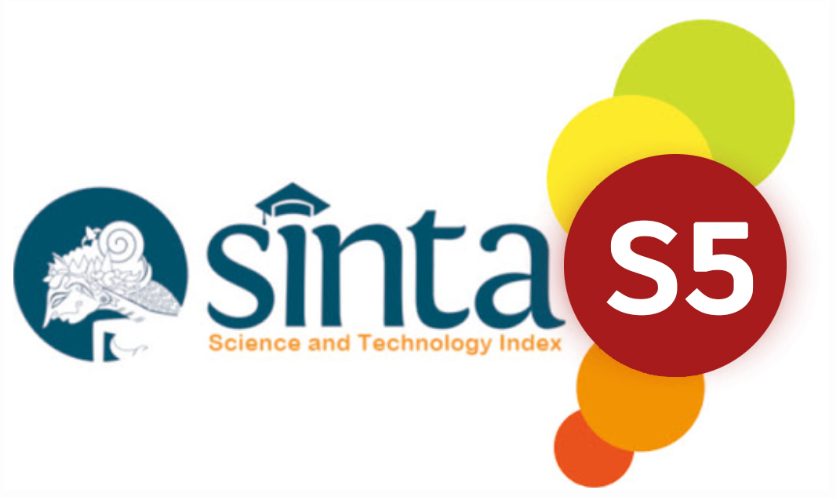RISK FACTORS OF CONGENITAL ANOMALIE AT HAJJ ADAM MALIK GENERAL HOSPITAL AND UNIVERSITY OF NORTH SUMATERA HOSPITAL IN 2017-2019.
DOI:
https://doi.org/10.32734/sumej.v3i3.3727Keywords:
Congenital Disorders, Haji Adam Malik General Hospital, University of North Sumatera HospitalAbstract
Background. Congenital abnormalities or congenital abnormalities are abnormalities that have existed since birth that can be caused by genetic and non genetic factors. The study of congenital abnormalities is called dysmorphology. Congenital abnormalities are one of the biggest contributors to death and morbidity in neonates, infants, and children. There were 7.9 million cases of congenital abnormalities and 3.3 million premature deaths due to congenital abnormalities in the world in 2013. In Southeast Asia it is estimated that cases of congenital abnormalities numbered 1,946,606 cases each year in 2013 according to WHO. In 2018, more than 8 million babies worldwide are born every year with congenital abnormalities. In the United States nearly 120,000 babies are born with congenital abnormalities each year. The cause of fetal congenital abnormalities due to genetic and non-genetic factors. Single gene mutations, balance disorders due to chromosomal abnormalities, and multifactorial abnormalities are included in genetic factors. Non-genetic factors can be caused by teratogen drugs (drugs, chemicals, infections, and maternal diseases that affect the fetus) and radiation. There are 5 risk factors that influence the occurrence of fetal congenital abnormalities, namely genetic, socioeconomic and demographic factors, environment, infection, and nutritional status. Aim. To determine the risk factors for congenital abnormalities in newborns at the Haji Adam Malik General Hospital and the University Hospital of North Sumatra in 2017-2019. Method. The design used by researchers uses a cross-sectional approach. The sample used was Patients with Congenital Abnormalities who were in the Human Rights Hospital and USU Hospital in 2017-2019. Result. The most influential risk factors for fetal abnormalities are maternal age, disease history, infectious history, and poor nutritional status. There are no results that can prove that the history of pregnancy affects the occurrence of fetal congenital abnormalities.
Downloads
References
Effendi, S.H., E. Indrasanto. 2008. Buku Ajar Neonatologi 1st Ed. Badan Penerbit IDAI, Jakarta.
Unnimon K. Devassy, Danasegaran M, Kumar Sai Sailesh, Soumya Mishra, Udaya Kumar Reddy, Antony N J. Congenital Anomalies Among Newborns. Bali Medical Journal. 2015. https://www.balimedicaljournal.org/index.php/bmj/article/viewFile/104/136
Birth Defects in South-East Asia A public health challenge. 2013.
http://apps.searo.who.int/PDS_DOCS/B4962.pdf
Conway, D. H. 2008. Prevalence of Congenital Anomalies in Infants with in UteroExposure to Antiretrovirals: IMPAACT P1025. National Institute of Health, Philladelphia.
Taksande, A., Vilhekar, K., Chaturvedi, P., & Jain, M. (2010). Congenital malformations at birth in Central India: A rural medical college hospital based data. Indian Journal of Human Genetics, 16(3), 159. doi:10.4103/0971-6866.73412
Sofian, Amru, 2012. Sinapsis Obstetric Rustam Muckhtar. EGC. Jakarta. Office of Communications. Eunice Kennedy Shriver National Institute of Child Health and Human Development, 2017. https://www.nichd.nih.gov/health/topics/birthdefects
Manuaba, Ida Bagus Gde. 2012. Ilmu Kebidanan, Penyakit Kandungan, dan KB untuk Pendidikan Bidan, Edisi 2. Jakarta : EGC
Prabawa, M. 1998. Kejadian Bayi Lahir dengan Kelainan Kongenital.Tesis Program Pendidikan Dokter Spesialis FK UNDIP. Semarang. http://eprints.undip.ac.id/12179/1/1998PPDS510.pdf
Glinianaia, S.V., P.W. Tennant, J. Rankin.2017. Risk estimates of recurrent congenital anomalies in the UK: a population-based register study. BMC Med. 2017;15(1):20. Published 2017 Jan 31. doi:10.1186/s12916-017-0789-5
Maharani TK, 2013. Faktor-Faktor Yang Berpengaruh Terhadap Terjadinya Kelainan Kongenital Sistem Urogenital Pada Neonatus. Karya Tulis Ilmiah FK UNDIP. Semarang. http://eprints.undip.ac.id/44182/2/BAB_I.pdf
Talisma K. (2017). Congenital anomalies among the Babies of Diabetic Mothers with Uncontrolled Blood Sugar - A Study in Tertiary Hospital.
Ernawati, R., Purwaka B. T., Prasetyo B., 2017. Nutritional Status of Third Trimester Pregnant Women Correlates Positively With Birth Weight. Majalah Obstetri & Ginekologi, Vol.25 No. 2 August 2017 : 41 – 47. Department of Obstetric and Gynecologic, Faculty of Medicine, Universitas Airlangga, Dr. Soetomo Hospital, Surabaya.
Batan, N. W., Puspawati, D. 2017. Kondiloma Lata Sebagai Manifestasi Klinis Sekunder Pada Kehamilan Trimester Kedua. MEDICINA 2019, Volume 50, Number 2: 249-254.
Pratama, B. F. 2018. Infeksi Cytomegalovirus Kongenital. Jurnal Kesehatan Melayu, Vol.1 No. 2. Artikel info: Online published first 25 April 2018; Received 26 September 2017; Accepted 31 Maret 2018. DOI: https://doi.org/10.26891/jkm.v1i2.2018.114-117
Sozan K. Ameen, Shahla Kareem Alalaf, Nazar P. Shabila. Pattern of congenital anomalies at birth and their correlations with maternal characteristics in the maternity teaching hospital, Erbil city, Iraq. BMC Pregnancy and Childbirth (2018). DOI: https://doi.org/10/1186/s12884-018-2141-2
Kessous, R., Wainstock, T., & Sheiner, E. (2019). Smoking during pregnancy as a possible risk factor for pediatric neoplasms in the offspring: A population-based cohort study. Addictive Behaviors, 90, 349–353. doi:10.1016/j.addbeh.2018.11.039
Lijuan Zhao, Lizhang Chen, Tubao Yang, Lesan Wang, Tingting Wang, Senmao Zhang, Letao Chen, Ziwei Ye, Zan Zheng and Jiabi Qin. Parental smoking and the risk of congenital heart defects in offspring: An updated meta-analysis of observational studies. European Journal of PreventiveCardiology. 2019. DOI: 10.1177/2047487319831367.
M Vrijheid, H Dolk, D Stone, L Abramsky, E Alberman, J E S Scott. 2000. Socioeconomic inequalities in risk of congenital anomaly. Arch Dis Child 2000; 82 :349–352.Arch Dis Child: first published as 10.1136/adc.82.5.349 on 1 May 2000.
Downloads
Published
How to Cite
Issue
Section
License
Copyright (c) 2020 Sumatera Medical Journal

This work is licensed under a Creative Commons Attribution-NonCommercial-NoDerivatives 4.0 International License.
The Authors submitting a manuscript do so on the understanding that if accepted for publication, copyright of the article shall be assigned to Sumatera Medical Journal (SUMEJ) and Faculty of Medicine as well as TALENTA Publisher Universitas Sumatera Utara as publisher of the journal.
Copyright encompasses exclusive rights to reproduce and deliver the article in all form and media. The reproduction of any part of this journal, its storage in databases and its transmission by any form or media, will be allowed only with a written permission from Sumatera Medical Journal (SUMEJ).
The Copyright Transfer Form can be downloaded here.
The copyright form should be signed originally and sent to the Editorial Office in the form of original mail or scanned document.











